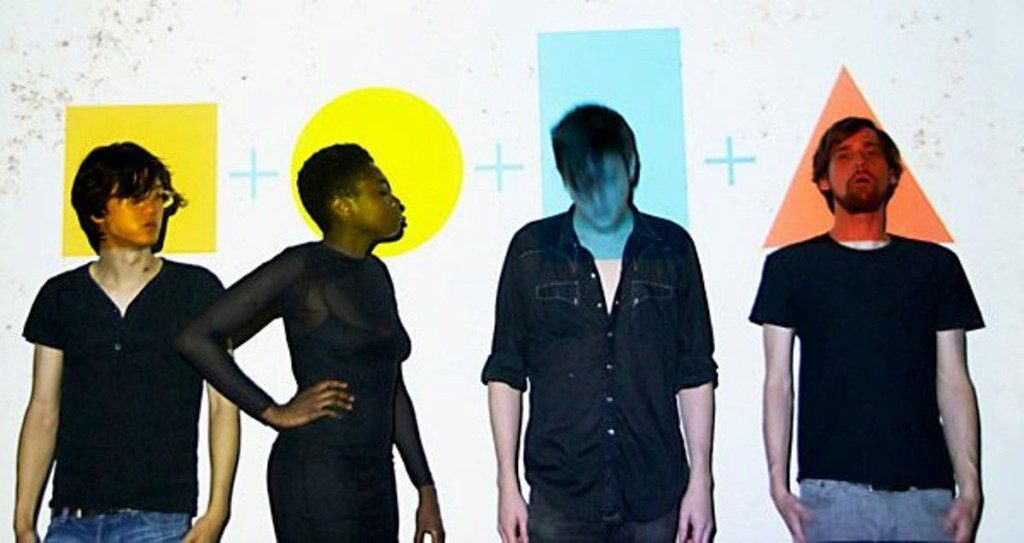313 Acid Queen and SickBoy Create Soundscapes from Skyscrapers on Buildings EP


Over the last ten years, Rebecca Goldberg – a.k.a 313 Acid Queen – has completely immersed herself in the city of Detroit. Unlike some transplants who come to the city to take, Goldberg, born and raised just outside of Detroit, came to learn, appreciate and contribute when the time felt right. Starting out as a student of Detroit house under the tutelage of legendary DJ Bruce Bailey, Goldberg cut her teeth spinning all around the city and slowly training her ear as a producer. Nearly a decade and five albums later, Goldberg pays homage to the city that has shaped her on her collaborative EP with Sardinia-based producer SickBoy (Stefano Piseddu), Buildings, out June 20 on limited-edition vinyl pressed at Archer Record Pressing. The record serves as a sonic map of the structures that portray Detroit’s beauty, oppression and resilience.
Today, Audiofemme premieres a video for EP opener “Guardian,” a bold and expansive track encapsulating the depth and complexity of the stunning, hundred-year old Art Deco-inspired skyscraper for which it is named, with its vast vaulted ceilings and tediously crafted mosaics. Goldberg and Piseddu use booming percussion to reflect the sturdy stone foundation and tie a rainbow of synth textures to symbolize the kaleidoscopic designs that gawkers can get lost in for hours.
The project began to take shape when Goldberg responded to a call from Detroit Underground label founder Kero for producers to work on a “Detroit Map Series.” The series includes three other parts – highways, roadblocks and rivers – and prompts producers to make sonic representations of these staples in the form of Detroit house music. As a member of Detroit Underground, someone who spends a good amount of time sneaking into abandoned buildings to take photographs, and regularly takes friends on tours of the Guardian Building, Goldberg already had an intimate connection with the sights and sounds that accompany Detroit architecture. She says when she was assigned “buildings,” it was a no-brainer.
“There’s just something about Detroit and the creativity that comes out of here and it’s either in the water or the landscape or the people or all of it together,” says Goldberg. The main challenge was to communicate this magic across space and time to her Italy-based collaborator. Goldberg spent hours taking photos and videos of buildings that inspire her and sending them to Piseddu, who was deeply moved by the imagery. Though the two never met in person, they bonded over a shared obsession with Detroit techno. While the language barrier was considerable, the producers were able to communicate through Google-translate and an innate, shared sense for beats and textures.
This wasn’t the first time that Goldberg made an unlikely connection through her passion for music. She explains that her foray into DJing was based solely on a love for the music and a desire to be around it as much as possible. “Like many people who are into stuff like this, I’m just a fan of this music. I’m a fan of dancing,” says Goldberg. She got her foot in the door by using her graphic design chops to create flyers and merch for Bruce Bailey, then later took matters into her own hands. “I was like, ‘Listen, if I’m gonna keep doing your flyers, I wanna be on the flyer. I also wanna play and I think you should put me on and give me a chance.’”
Then began what Goldberg describes as an apprenticeship of sorts, learning from Bailey and other well established Detroit DJs. “It would be me and all these house heads that had been in the game forever, and they loved me,” says Goldberg. “We loved each other, those people are my family. They wanted to teach me about the music and the culture of it and the history.” After years of collecting records, Goldberg decided it was time to contribute her own soundprint. “Eventually, you start hearing things that don’t exist yet, and that’s how music production started for me,” explains Goldberg. “I’ve tuned my ears now so well with DJing that I think I can play things that I would want to DJ and dance too, and that’s a whole ‘nother wormhole of obsession.”
Buildings speaks to Goldberg’s years of soaking in sounds and stories from Detroit techno legends, while adding her own inspirations into the mix. After cascading through a series of dreamy soundscapes, the EP ends on “Renaissance,” a track that distills the futuristic aura that surrounds Detroit’s architectural centerpiece. “The Ren Cen is so crazy if you look at it,” says Goldberg. “It looks like a spaceship from the ’80s that’s supposed to be the future about to just take off.” The building’s corresponding track is full of laser-sharp synth sounds and swells of air, making it easy to imagine the entire structure blasting into space.
The EP is as much of a love letter to the city as it is a testament to music’s power to transcend across oceans and bring people together. Just as techno has brought the people of Detroit together for years, it allowed Goldberg and Piseddu to make an entire EP together, even separated by an ocean.
Follow 313 Acid Queen on Instagram for ongoing updates.












